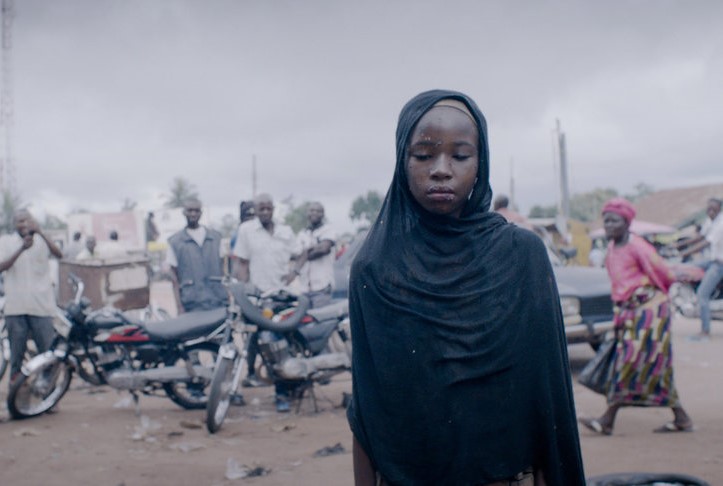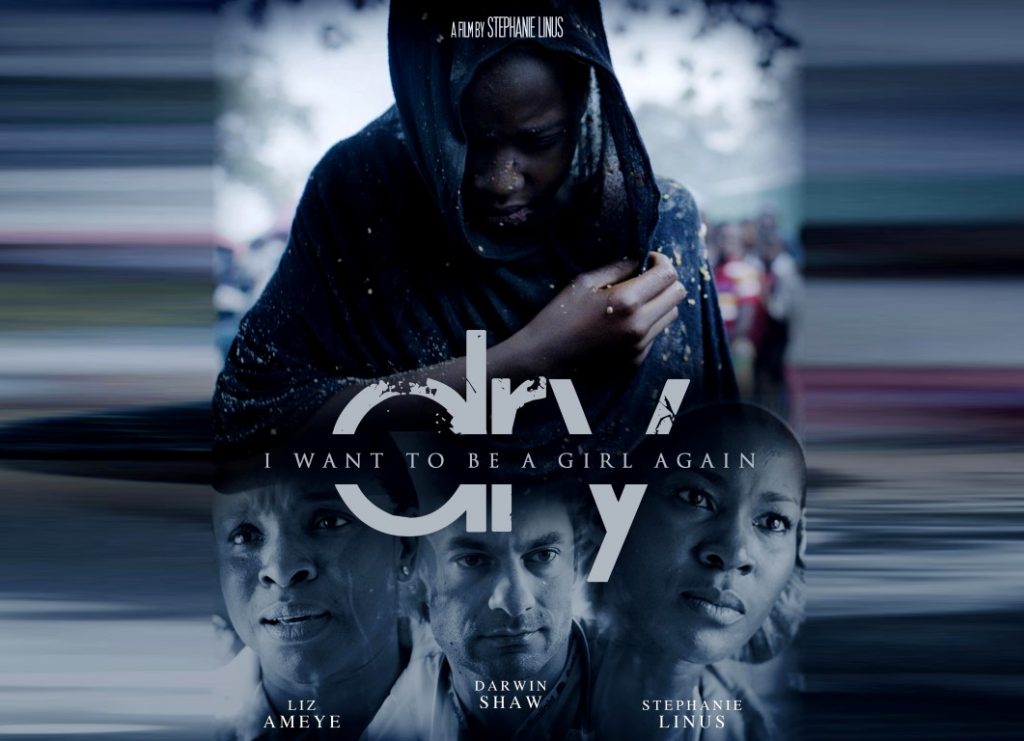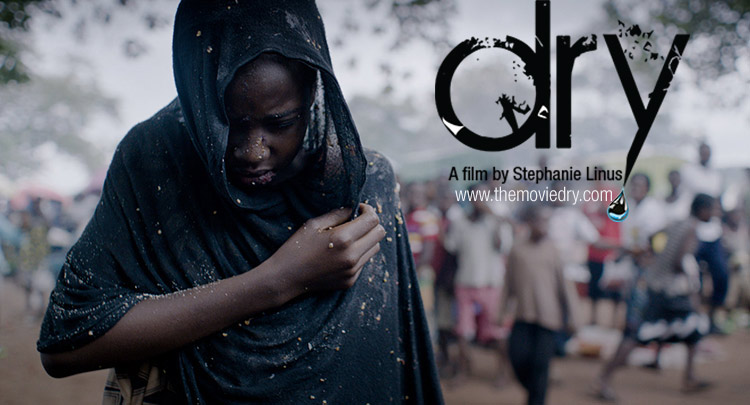By
Ebi Robert
A sure way to achieve peace is respect for human rights –
Child marriage is malice to Humanity.
Human rights are fundamental for the existence of humanity because every human is vested with some form of inalienable rights that everyone in society is bound to respect. These rights are expected to be exercised and enjoyed without any form of discrimination being that all persons are born equal, whether big or small, woman or man. Rights define every human and the beauty of their existence.
Without rights, society will be chaotic and full of conflict, as servitude and slavery will be the order of the day. This is not good for any society yearning for civilization. Before current modernization sets in, the world was clouded with the dark times of the Master and Slave relationship. In those days, only a privileged few were enjoying basic rights with the slaves enjoying little or no rights at all. This made rights a privilege to wish for, rather than a right itself.
British Poet, William Coper (1731 – 1800), on ‘Table Talk’, said: Freedom has a thousand charms to show, that slaves, howe’er contended, never know. Even as society advanced, that is, as slavery started becoming more than archaic, women started struggling in the web of ‘whether or not they are entitled to certain rights’, such as, the right to vote and be voted for, the right to the possession of property and so on. In Africa, most precisely Nigeria, it is even of recent times that society started accepting this reality, even though cultural relativism still remains a hard nut to crack.
The decision of the Nigerian Supreme Court in the case in the case of Mojekwu v. Mojekwu, [1] went a long way to define clearly the equal rights of women in our society. However, as earlier opined, cultural relativism is one quagmire that needs to be addressed. Andrew Mellon Professor at the graduate School of International Studies, University of Denver, Jack Donelly, extensively discussed the concept of cultural relativism in his work: “Cultural Relativism and Universal Human Rights, (1984) [2] as well as the “Relative Universality of Human Rights”, [3] where universality and cultural relativism were placed side by side and argued.
Bonny Ibhawoh, Assistatant Professor of the McMaster University in his work: “Between Culture and Constitution: Evaluating the cultural Legitimacy of Human Rights in the African State” made similar findings on the discourse. In the Indian case of Sushila Gothala v. State of Rajasthan, [4] the court was explicit when it stated that the social evil of child marriage can be eradicated only if the people revolt against the custom”.
Africa has numerous cultures that cannot be easily abandoned owing to the fact that they are rooted in deep beliefs. One of such cultural practices is the practice of early child marriage. Child marriage is an act of getting a female below the legal age of adulthood which is 18, married to a child of same age range or an adult. Article 1 of the Convention of the Right of the Child [5] defines a child to mean every human being below the age of eighteen years unless under the law applicable to the child, majority is attained earlier.
Childs not Brides (CNB) on the other hand, defines child marriage as any formal marriage or informal Union where one or both of the parties are under 18 Years of age. According to CNB, each year, 15 million Girls are married before the age of 18. That is 28 girls every minute, 1 every 2 seconds. [6] United Nations population Fund went further to state that one in every nine is married under age 15. [7]
Child marriage is a common practice in the Northern part of Nigeria where young girls are given in marriage at a tender age. This practice has been condemned by most civilized countries of the world including Nigeria even though practiced by some radical traditionalists in Nigeria because of religion beliefs. The practice is not just condemned because the girl child has not come of age but because of the health and psychological effect the act may have on the child and her womanhood. Such a child’s life will be stigma stocked. These effects can last for a lifetime if it doesn’t lead to the eventual death of the child involved.
Books upon books have been written on the right of the girl child. Movies have also been shot about the girl child, one of which is “DRY”.[8] Movies primarily are acted to entertain the audience, however secondary and beyond, some movies have many stories to tell and many more moral lessons that can also be learned from books. This review will be focusing on the movie, DRY with a thorough discussion on the right of the girl child marriage, and its consequences and how the implementation of the right policies will lead to relative peace in our society.
PLOT SUMMARY
Set in Wales and Nigeria, Stephanie Linus’ Dry, tells the story of a girl child by the name of Halima, the daughter of one Dr. Zara, who suffers from the consequences of early child marriage and losing her life in the process. The movie is inspired by the true life story of a woman the director, Stephanie Okereke Linus, met some years back.
STORY NARRATION
Zara grows up in the northern part of Nigeria. Her parents are killed and so she is forced to live with her aunt. Mr. Musa the husband of Mrs. Musa, Zara’s aunt, started fixing his eyes on her, in an awkward way. In his lust, he rapes Zara. Zara explains this to her aunt who drives her away into the streets in the cold, claiming her husband is innocent. Zara, who is already pregnant, is taken in by one Madam Kojo, who is an expert in human trafficking.
Madam Kojo takes her in and engages her (Zara) in prostitution. Zara doesn’t like the idea, but being naïve she can only wish for God’s grace. Madam Kojo eventually prepares a young man for Zara. Zara is now expected to have her first encounter with a rich folk, a patron of Madam Kojo. Zara who cannot bear the thought of a man sleeping with her, bites the ear of the man. This leads to the beating of Zara as Madam Kojo asks her thugs to deal with her mercilessly. Soon Zara becomes due. She puts to birth a bouncing baby girl.
Madam Kojo who has a better plan for the baby, sells the baby to one Mrs. Ibrahim who is in dare need of a baby. Zara lives on, believing her baby is dead. Zara has to suffer from a complication known as Vesicovaginal Fistula as a result of the complications suffered during delivery. This causes her to bed-wet anything she sleeps. Madam Kojo can no longer bear it and therefore chases her out of the house. Zara becomes homeless and is picked up by a medical doctor who always visits Africa for missionary trips, but resides in Wales. Zara grows up and is educated to be a successful medical Doctor.
Meanwhile in Nigeria, Zara’s daughter who was brought up by Mrs. Ibrahim, is married to one old man, Sani, at the age of thirteen causing Halima’s childhood to be stolen from her. She is married, not just married as a minor but as the fourth wife. On her first night, Sani forcefully sleeps with her resulting in the loss of her virginity at 13 in a child marriage.
Nine months were due and a quack midwife administers on her using a razor to cut sensitive organs of her body. This leads to the death of her child and her having Fistula which is the same ailment her mother, Dr. Zara, suffered from years back. She starts bed wetting, making her husband’s household uncomfortable. Owing to the fact that the cause of her ailment cannot be explained by the villagers or her family, she is accused of witchcraft and is chased out of the house into the cold. Fatima, the first wife of old Sani, who loves her, takes care of her in an old building while she was suffering from isolation and a life of rejection. No one associates with her, for she was believed to be a cursed child. Help is sought, but none is forthcoming.
Zara arrives in Nigeria as a missionary medical doctor after her adoptive mother falls ill. She visits where Madam Kojo used to live only to find out that Madam Kojo no longer stays there. She eventually locates Madam Kojo only to discover that Madam Kojo is suffering from a stroke, she talks only once in a while. Zara meets Madam Kojo’s daughter who tells her that her mother regrets all she had done. Madam Kojo eventually speaks and Zara and Madam Kojo’s daughter visits Mrs. Ibrahim in her husband’s house. The real story is revealed about who the true mother of Halima is. Mrs. Ibrahim denies it all. Halima’s suffering continues. The whole village does not want to associate with her save her adoptive mother and Fatima, who has been threatened by her husband old Sani, should she help.
A certain girl observes Halima’s condition and feels pity for her because she had a similar issue of fistula but gets DRY (well). Halima’s health worsens and she is taken to the hospital by her adoptive mother and Fatima. Reaching the hospital, Mrs. Ibrahim discovers that Zara, the true mother of Halima, is the one expected to save Halima’s life. The operation is successful. Mrs. Ibrahim couldn’t bear it as she tells Halima that Dr. Zara is her true mother. The hands of Halima could only touch the cheek of her mother when she finally gives up. Zara weeps for the death of her daughter.
However, the death of her daughter encourages her to do more. Zara speaks against the government that has undeveloped the health sector. Zara starts speaking for the right of the girl child with so much zeal. This is a woman who saved many lives but could not save her own flesh and blood. The government feels threatened and therefore invites Dr. Zara to the National Assembly to speak to the parliamentarians. Zara speaks thus:
“Thank you, honorable speaker for this wonderful opportunity. I am standing in front of you today, not just because am a woman, but first, I am a human being and as such, my fundamental human right must be protected. The African woman can be described as the most endangered species of our world. Culture conditions have put her [9] to a life of submission, and subservient against her natural inclinations for freedom and self-determination. She is at birth, a child to be loved and cared for but as she gains age and consciousness of her environment, an archaic tradition reduces [10] her social value to a mere object to be used and given away to almost anything, to almost anybody.
That am alive today is a miracle. You all may wonder what my story is. My daughter Halima, died in my arms few days ago from fistula. She was rushed to the hospital almost in a state of comma. Fistula has resulted in giving her septicemia and then she died. I am a medical doctor. I have saved many lives. But the one person that I cared about, the one I wanted to just tell how much I loved her, the one person I could have ever given everything for, or could have done anything for, ended up dying in my arms. And you know what? I am not different from all this women who go through this trauma every day. I am just lucky. My parents died or rather they were killed by the rebels who invaded our village and killed everyone. I escaped. I ran to my Aunty’s house, but she wasn’t pleased to see me.
Her husband was nice to me at first. Showered me with gifts, looked at me in awkward ways I did not understand until eventually….[11] My aunty had to chase me away. I found myself on the street. I was hawking and then two men kidnapped me and took me to a woman called madam Kojo. And Madam kojo who felt she owned me and could do anything with me, forced me into prostitution. And it was at that point, I realized that I was carrying my uncle’s child. Well Madam Kojo had her plans. She had all the plans. She lied to me that my baby died, and then I developed fistula. I felt so ashamed that I meant nothing. I believe everything my aunty told me that I was evil, that I killed my parents, that I allowed my uncle to rape me, that everything happening to me, I deserve it, that I am such a horrible person.
But you know what? The death of my daughter made me realize that, No, I don’t! I don’t deserve it. I deserve to be happy. I deserve to be protected. I deserve to be loved. Just that I wish I could show the love that I got from my adoptive mother to my daughter who found me on the street, repaired me of fistula and changed my life. Today I stand before you, to speak for the rights and welfare of the daughters of Africa. To speak on the abuse on induction, to the status of material gifts especially at tender age, the practice of underage marriage, female circumcision, lack of access to medical care and education and the gross abuse of womanhood. I insist that our final and most decisive anti fistula effort should commence now. Time has come for us to put a stop to this menace. Time has come for us to save ourselves…
We need to enforce the Child Rights Act. We need to pass the National Health Bill, create an agency for the eradication of fistula in other to achieve our millennium development goals, and in all I beg you, please, let these young girls have their childhood, because when it’s taken away from them you can never get it back. And in all of this today, I confront my abuser, who amazingly is one of you, Honourable Musa Abdulahi. I urge the National Assembly not only to grant me the wishes of these women, but also to bring to judgment, Honourable Musa for the crime he committed to a young girl many years ago.”
DRY, ON CHILD MARRIAGE
The foregoing summarizes the narration of the movie, DRY. The movie exposes the menace of child marriage and its consequences. As seen in the movie, Dr. Zara had to visit a shrink always to calm hers nerves down. This was because of the psychological effect her experience produced. Child marriage is child abuse which invariably means Dr. Zara was indeed abused at a young age. The thought of it always led to tears even at a tender age. It is no gain saying that Halima’s death was as a result of her abuse. Many young girls all over the world had been subjected to the same emotional torture that has amounted to unimaginable consequences in their lives.
Although, the story of Halima may be a fiction, the fact is the story depicts the similar if not exact story of many girls in our world. Aggressive frustration which is transferred is one goal of this abuse following the Frustration Aggressive Theory of conflict, and this is certainly conflict connected and a threat to world peace.
In the book: “Child Marriage and the Law”, compiled by United Nations Children Fund (UNICEF), it was stated that evidence shows that child marriage is a tool of oppression which subordinates not just the woman but her family. Not only does child marriage perpetuate an inter-generational cycle of poverty and lack of opportunity; it reinforces the subordinated nature of communities that traditionally serve the powerful classes by giving a girl child in marriage to an older male.[12]
Domestic violence is one consequence discussed in the series. The US Department of Health and Human Services, Administration for Children and Families, 2005, data shows that Psychological maltreatment had a total of 63, 497 cases which is a total of 6.2% and Sexual abuse alone, 83, 810 cases which is 8.2%, unknown cases running over 9,000. Thus, beyond the reduction of the societal value which is an affront attack on a universal treasure and the injury it causes to the dignity of her person, whosoever may be the person, child marriage is a major cause of physical and emotional violence which is an antonym of all kinds of peace. This, perhaps and more, must have inspired the international community to make moves to solve this problem.
SOLVING THE CONSEQUENCES AND POLICING THE RIGHT POLICIES
The United Nations has been at the fore, protecting and promoting the right of the girl child. Non-Governmental organizations too have been instrumental to that effect such as Amnesty International, Human Rights Watch and Peace December, most precisely Peace December, Nigeria.
The United Nations adopted for the first time a resolution on child, early and forced marriage at the human rights council of the UN. [13] It was co-sponsored by a cross-region of over 100 countries. This was considered for the international development agenda for post-2015. Many countries in Africa such as Angola, Benin, Congo, Ghana, Egypt, Morocco, Tunisia, etc, were present at the resolution with Nigeria in absentia. [14]
Apart from resolutions by the UN, and seminar as well as forum talks, certain principles of Jus Gentium and Jus cogens that help project the need for child marriage prevention, there are certain Declarations and Conventions both international and regional, that directly and indirectly do the same, viz: the Universal Declaration of Human Rights, [15] that was developed to the International Convention on Civil and Political Rights [16]/International Convention on Economic Social and Cultural Rights, [17] Conventions on the Rights of the Child, [18] Conventions on the Consent to Marriage, Minimum Age for Marriage and Registration of Marriage, [19] Supplementary Convention on the Abolition of Slavery, [20] the Slave Trade and Institutions and Practices, 1959, the World Health Constitution, [21] Convention against Torture and other Cruel, Inhuman or Degrading Treatment or Punishment (CAT), [22] African Charter, 1981, America Conventions on Human Rights, 1969, The European Convention on Human Rights, 1950, The European Social Charter, 1961, etc.
Various provisions under these instruments clearly spell out the right of the girl child or the child in general. Beyond these, municipal jurisdictions have been encouraged as signatories to many of these treaties to domesticate them in other to foster the fight against child marriage and other threats. In India, judicial activism has been made manifest in many ways thorough ratio and dicta to affirm the combat of child marriage as was seen in the case of Sushila Gothala v. State of Rajasthan, [23] stated above. The Indian Child Marriage Restraint Law of 1929 is a very good example of municipal law banning child marriage in the national level. For dicta, they should be most likely found in judicial than in obiter.
In Nigeria, the first generation rights as broken down in the International Convention on Civil and Political Rights (ICCPR) have been made supreme in the Chapter IV of the 1999 Constitution of the Federal Republic of Nigeria as amended, (CFRN). [24] The rights in the International Convention on Economic, Social and Cultural Rights (ICESCR), found its place in Chapter II of the fundamental objectives and Directive principles of state policy which is actually not justifiable. [25] However, some conventions signed and ratified by Nigeria which directly and indirectly deals on child marriage have been domesticated into her municipal Laws in line with S. 12 of the CFRN.
One of such is the African Charter of Human’s and People’s Right as affirmed in the case of Abacha v. Gani Fawehinmi. [26] The Nigerian Child Right’s Act, 2003 provisions re-stated the fundamental rights of humans as provided for in the constitution via marginal references and then goes a step further to specifically provide for the prohibition of child marriage in Part III. While this is commended as a very good move, the issue of enforceability is one that should be considered for improvement and this is one of the points raised by Dr. Zara. Amongst the policies raised by Dr. Zara is the passing of the National Health Bill which has already been passed as the National Health Act. This Act is expected to help in solving most of medical issues of our time which ought to be little or no issues at all.
CONCLUSION
DRY may have been acted as a movie, but the significance of the movie for our future generations cannot be overemphasized, owing to the fact that it does not only expose the consequences of child marriage; it is simply a blueprint of practical directions for the government to reduce if not eradicate the menace completely. Furthermore, other measures outside the purview of the Law should be carried on to see that this current menace is checkmated. Thus, DRY is a must watch movie, today and for tomorrow. Its message shall last for ages to come.
Ebi Robert
Ebinabo Robert Fortunee, nom de plume, Ebi Robert, (aka: The Lord of Ink), a graduate of Law (LLB) from the Niger Delta University, was born February 6, 1990. He hails from Egweama (paternal) and Obiata in Nembe (maternal), in Bayelsa state of Nigeria. He is a playwright, poet, essayist and advocate. He writes legal, political and literal articles.
He has written many poems too, some of which have been published in both national and international anthologies and magazines such as: Love, a four letter word, (USA- Creative Talents Unleashed– 2014) edited by Raja William, “Emanation, Foray into Forever,” (USA- International Authors) edited by Prof Carter Kaplan, et al, “Epistles of Lies,” (Nigeria) edited by Adebayo Agarau Adeyemi ,“Tribute to Mandela,” (India) edited by Prof Mitiu Olawuyi et al, Randomly Accessed Poetics (USA- Pen Head Press – 2014) edited by Sarah Gawricki et al, Epitaph (USA) edited by Kriti Sengpta and Williams Peters, Emanation, 2+2 equals 5 (USA—International Authors) edited by Prof Cater Kaplan et al, Muse for World Peace 1 ( India) edited by Prof Mitiu Olawuyi (JUNGLE POET), Muse for World peace 2 ( India) edited by Prof Mitiu Olawuyi (JUNGLE POET) to mention a few. The writer was Finalist, Bayelsa State Poetry and Essay Competition, 2007, Winner, E.K Okorodas poetry competition, 2015 and First runner up, Chrysolite Bi Monthly Poetry contest, 2016.
He is the author of “AN EMPTY KINGDOM”, and current acting Director of Peace December, Nigeria, Bayelsa State Chapter. The writer can be reached at: [email protected]





No Comments Yet!
You can be first to comment this post!